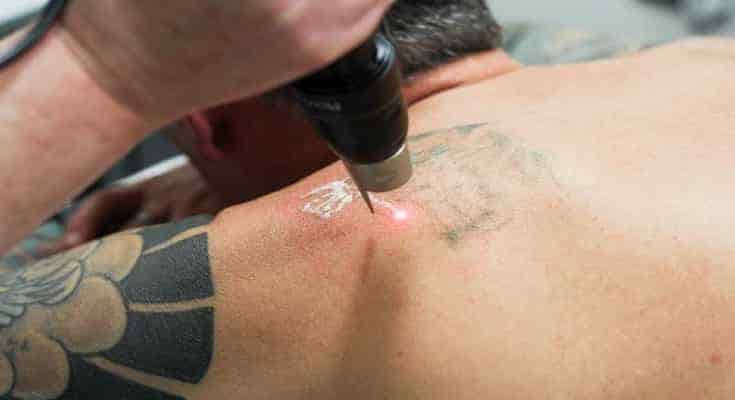-
26 October 2020
Is Laser Tattoo Removal More Painful Than Getting A Tattoo?

Tattoos are a common embellishment of the body which have become a style statement. While earlier they would be visible on the arms of rebellious youngsters and Harley Davidson riding macho men, these days they are sported by one and all.
Unsurprisingly, there are several people planning to get rid of them for various reasons of their own. When thinking about the removal of ink, most people rely on laser tattoo removal in Melbourne for the task because of its high success rate.
However, the fear of pain makes them take a step back and look for answers. Usually, they want to know if the treatment would pain more than inking. There is no definitive answer to that question as it depends on a variety of factors. However, the pain is similar to the discomfort felt while getting inked. Here are the elements that may vary the degree of pain.
As stated above, most patients have said that the sensation of laser tattoo removal procedure is similar to the degree of pain felt while getting tattooed. Usually, it is described as the snapping of a rubber band on the skin or tiny pricks that move very quickly over the surface of the tattoo.
Some people can bear the pain without the need for anaesthesia. However, if your threshold of tolerating pain is too low, then the practitioner will apply a topical anaesthetic cream to relieve you from the discomfort. The latest laser technology and equipment has helped in alleviating pain to a large extent, but slight soreness is common. Let us take a look at the factors that influence the intensity of throbbing during the procedure.
Laser tattoo removal involves targeting a high-intensity laser beam on the ink present between the epidermis and the subcutaneous tissues. It shatters the pigment into tiny particles which are filtered out of the body through the lymphatic system.
The high-speed laser pulses are bound to create a certain level of pain. If you did not feel much pain while getting the tattoo, then the removal will not hurt either. Let us understand what can affect the level of pain.
If your tattoo does not have any shading and has light ink, then the laser tattoo removal process will be less painful. If the tattoo has dark gradient filling and intricate design, then the removal will be more painful. Fine lines are easier to remove and hurt less. For the darker tattoos, the laser is required to concentrate over the same place for a longer time to shatter the ink.
With time, all tattoos become faded as the immune system works against the foreign ink particles. However, it is not able to break the large size of ink, and thus, the tattoos stay permanent. So older tattoos become easier to remove because the ink is already faded.
On the other hand, the newly done tattoos have a higher concentration of ink present under the epidermis, which requires more work to be done by the laser beam. Thus it is more painful to remove tattoos which have been done recently than those which were done ages ago.
Some of the body parts are more sensitive to pain as these may have less fat, thin skin, several nerve endings or proximity to the bones. These include ankles, ribs, hands, fingers, shins, feet, face, inner biceps, wrists, the length of the spine, etc. On the contrary, laser tattoo removal in places which have more fat is less painful. These areas include forearms, calves, lower back and buttocks.
If you have a large tattoo that covers the entire leg or back, then you will have to bear more pain than someone who has a small tattoo. Simple tattoos are easy to remove than complex ones. Also, tattoos created by amateurs can be removed easily because the ink is less dense.
The pain subsides after 15 minutes of the session and can be reduced by applying cooling pads on the treated area. Silicone gels should be applied to the tattoo for two weeks after the session. Some people may witness redness or inflammation, which usually subsides within a day or two.
The sensitivity of the skin does not make much difference to the amount of pain felt by the person undergoing the treatment. Laser therapy is ideal for all skin types and tones and is completely safe when performed by a certified and experienced laser technician or dermatologist.
The healing process after the session may involve peeling, scabbing or flaking of the skin. However, you should not pick on the scabs and keep the treated area away from sun exposure and swimming pools. Avoid taking too hot baths or bathing in high-pressure showers. Follow the advice of the practitioner to ensure you do not interfere with the healing process and make matters worse.
If you are planning to undergo laser tattoo removal in Melbourne, but are sceptical about the pain, then you need to check the facts. It does not hurt much, and the pain can be further alleviated with the help of topical anaesthetic cream. So make use of the information given above to understand the treatment better.